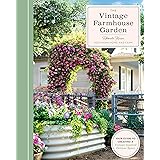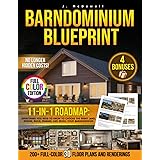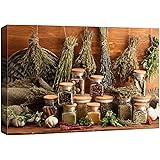Innovative DIY Garden Ideas: Elevating Your Horticulture with Smart Solutions
For any dedicated horticulturist, the pursuit of a thriving and aesthetically pleasing garden often involves discovering inventive approaches. The accompanying video offers a glimpse into a myriad of clever DIY garden ideas, demonstrating how common household items and rudimentary materials can be transmuted into indispensable gardening assets. This article aims to delve deeper into these practical innovations, providing an expert perspective on their application and the underlying principles that make them so effective. It is believed that by understanding the ‘why’ behind these ingenious hacks, a more sophisticated level of garden management can be achieved.
The essence of sustainable gardening frequently revolves around resourcefulness and the ability to repurpose. The solutions presented here span from crafting unique garden decor to optimizing plant nutrition and pest management, all while minimizing waste and maximizing efficiency. Through such ingenuity, superior outcomes are often realized without the necessity of significant financial outlay.
Cultivating Aesthetics: Upcycled Creations for Garden Embellishment
The visual appeal of a garden is often augmented by thoughtful decor and structural elements. The video briefly showcases the creation of items using gypsum and cement, materials renowned for their versatility and durability in outdoor applications. For instance, the use of a swimming cap for mold-making, demonstrated with 450 grams of Orthoprint—a dental impression plaster—highlights an accessible method for producing intricate forms.
Gypsum, primarily calcium sulfate dihydrate, is amenable to detailed casting, especially when combined with water in precise ratios and allowed to set for approximately one hour. Cement, conversely, provides a more robust and weather-resistant option for permanent structures. Typically, Portland cement is mixed with aggregates and water to form concrete, which necessitates a curing period, often extending to a full day as suggested, to achieve optimal compressive strength. These materials are invaluable for fabricating custom planters, stepping stones, or sculptural accents, thereby enabling a personalized landscape design that might otherwise be cost-prohibitive.
Moreover, the concept of salvaging a “broke pot” transcends mere repair; it encourages a philosophy of repurposing. Instead of discarding damaged terracotta or ceramic vessels, their fragments can be artfully arranged into mosaics, used as drainage layers at the base of new containers, or even reassembled in a Kintsugi-inspired manner, celebrating their imperfections as part of their unique history. Similarly, an old T-shirt or denim jeans can be effortlessly transformed into a no-sew apron, providing practical utility while advocating for textile upcycling within the horticultural sphere.
Revolutionizing Plant Care: Smart Watering and Substrate Enhancement
Efficient hydration is a cornerstone of successful plant cultivation. The video introduces a fundamental automatic watering concept, presumably involving a simple wick system or a slow-drip mechanism. By utilizing a 1.5-liter water reservoir, a consistent, albeit modest, supply of moisture can be delivered to plants over an extended period. This method reduces evaporation and ensures water is directed precisely to the root zone, a critical advantage in container gardening or during short absences.
However, an equally fascinating and somewhat unconventional method involves the use of diapers to enhance soil moisture retention. Modern disposable diapers contain super-absorbent polymers (SAPs), typically sodium polyacrylate, which are hydrophilic macromolecules capable of absorbing hundreds of times their weight in water. When incorporated into potting soil, these polymers swell, forming a gelatinous matrix that slowly releases water back into the substrate as it dries. This mechanism is particularly beneficial for drought-prone plants, hanging baskets, or any situation where consistent moisture levels are challenging to maintain. Nevertheless, care must be exercised to ensure adequate drainage and aeration are still provided, as excessive moisture can lead to anaerobic conditions and root rot.
For lawn establishment, the video briefly alludes to grass growth over 2, 7, and 14 days, possibly in conjunction with sawdust and oats. While sawdust can act as an organic mulch or soil amendment—though it is noted for temporarily sequestering nitrogen during decomposition—oats, particularly oat straw, are sometimes used as a protective layer over newly sown grass seeds to deter birds and retain moisture. A well-prepared seedbed, rich in organic matter and balanced in its nutrient profile, remains paramount for robust turf development.
The Efficacy of Natural Fertilizers: Harnessing Household Organics
Chemical fertilizers are often perceived as the default for nutrient replenishment; however, organic amendments derived from common household waste can provide a sustainable and highly effective alternative. The video highlights three primary sources: banana peels, coffee grounds, and eggshells, each contributing unique nutritional benefits to the soil ecosystem.
-
Banana Peels: Potassium Powerhouse
Banana peels are an exceptional source of potassium (K), a critical macronutrient essential for flowering, fruiting, and overall plant vigor. Potassium plays a pivotal role in osmotic regulation, enzyme activation, and the transport of water and nutrients within the plant. By burying chopped banana peels near the base of flowering or fruiting plants, a slow-release supply of this vital element is provided as the peels decompose, enriching the soil’s organic matter content simultaneously.
-
Eggshells: Calcium for Cellular Strength
Crushed eggshells offer a readily available source of calcium carbonate. Calcium is indispensable for strong cell wall development, promoting robust plant structure, and preventing common physiological disorders such as blossom end rot in tomatoes and peppers. To maximize bioavailability, eggshells should be thoroughly cleaned, dried, and pulverized into a fine powder before being incorporated into the soil. This facilitates quicker decomposition and nutrient release, thereby enhancing soil structure and pH over time.
-
Coffee Grounds: A Multifaceted Soil Amendment
The video astutely identifies several uses for discarded coffee grounds, underscoring their exceptional versatility within the garden and beyond. They are rich in nitrogen, a primary macronutrient vital for vegetative growth, along with trace amounts of potassium and phosphorus, fostering fertile soil. Their slightly acidic nature can also be advantageous for acid-loving plants such as blueberries, azaleas, and rhododendrons. The addition of coffee grounds improves soil structure, enhances drainage, and attracts beneficial earthworms, which further aerate and enrich the soil profile.
Beyond their role as a fertilizer, the abrasive texture and caffeine content of coffee grounds render them effective as a natural repellent against various garden pests, including slugs, snails, and caterpillars. When spread around the base of vulnerable plants, a physical barrier is established that these gastropods are reluctant to cross. Furthermore, the porous structure of coffee grounds makes them an excellent odor neutralizer, capable of absorbing strong odors when placed in enclosed spaces like refrigerators. Intriguingly, their abrasive quality is also exploited in a traditional “anti-flea treatment” for pets when added to shampoo, though it must be noted that this is a home remedy and not a substitute for veterinary-approved treatments. The exfoliating properties of coffee grounds are also leveraged in cosmetic scrubs, demonstrating a breadth of applications that extend far beyond their initial purpose.
Propagating the Exotic: Your Own Pineapple Plant
The prospect of growing a pineapple from its crown is a rewarding endeavor, turning a discarded fruit top into a tropical plant. The process, while requiring patience, is remarkably straightforward. Initially, the green, leafy crown is twisted or cut from the fruit, ensuring some of the fruit flesh remains attached to the base. Subsequently, the lower leaves are meticulously removed to expose the root primordia, which appear as small bumps around the stem’s base. This prepared crown is then allowed to “cure” or dry for several days, forming a callus that prevents rot upon planting. This step is critical for successful propagation.
Following the curing period, the crown can be placed in a glass of water, ensuring only the bottom portion is submerged, or directly planted into a well-draining potting mix. If water propagation is chosen, the water should be changed every few days until roots appear, typically within a few weeks. Once a robust root system has developed, the young plant is transferred to a larger pot filled with a sandy, well-draining soil mix, mimicking its native tropical habitat. Consistent warmth, bright indirect light, and moderate humidity are essential for the pineapple plant’s growth, culminating, eventually, in the potential for your very own fruit, a testament to the enduring appeal of DIY garden ideas.











